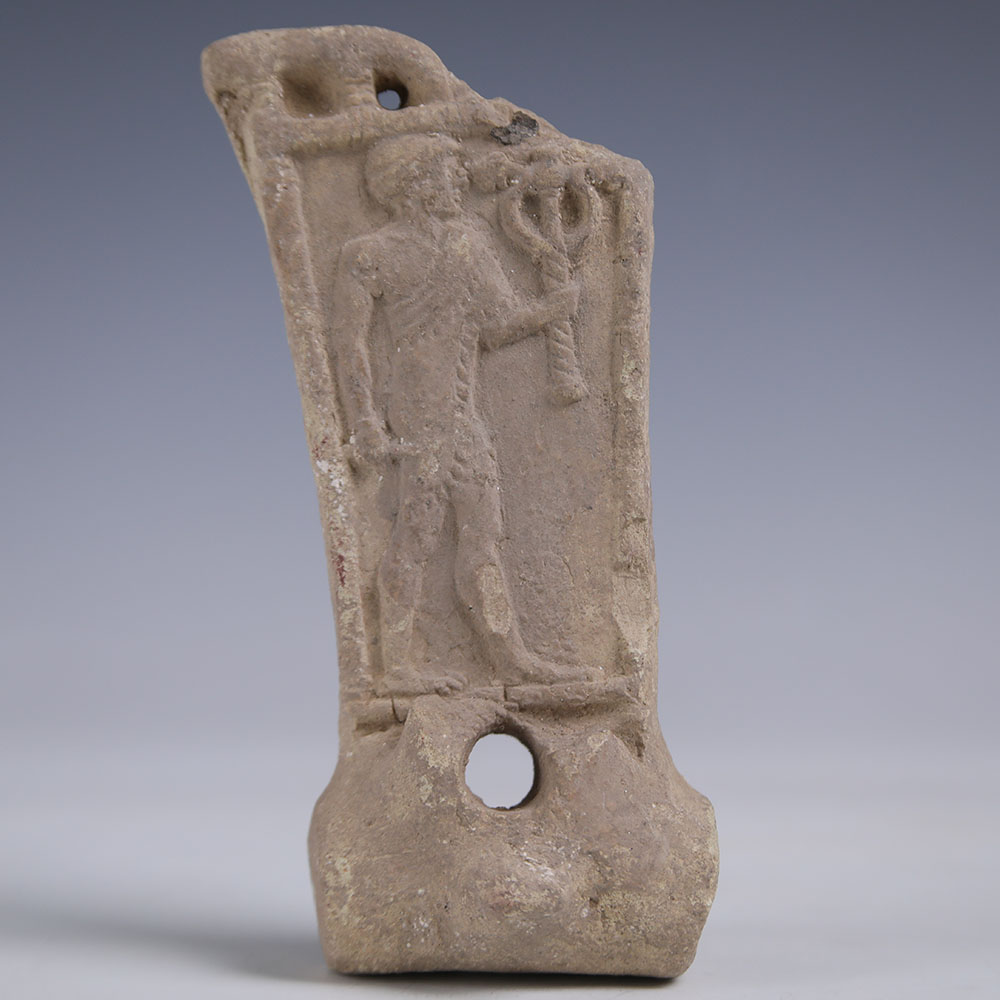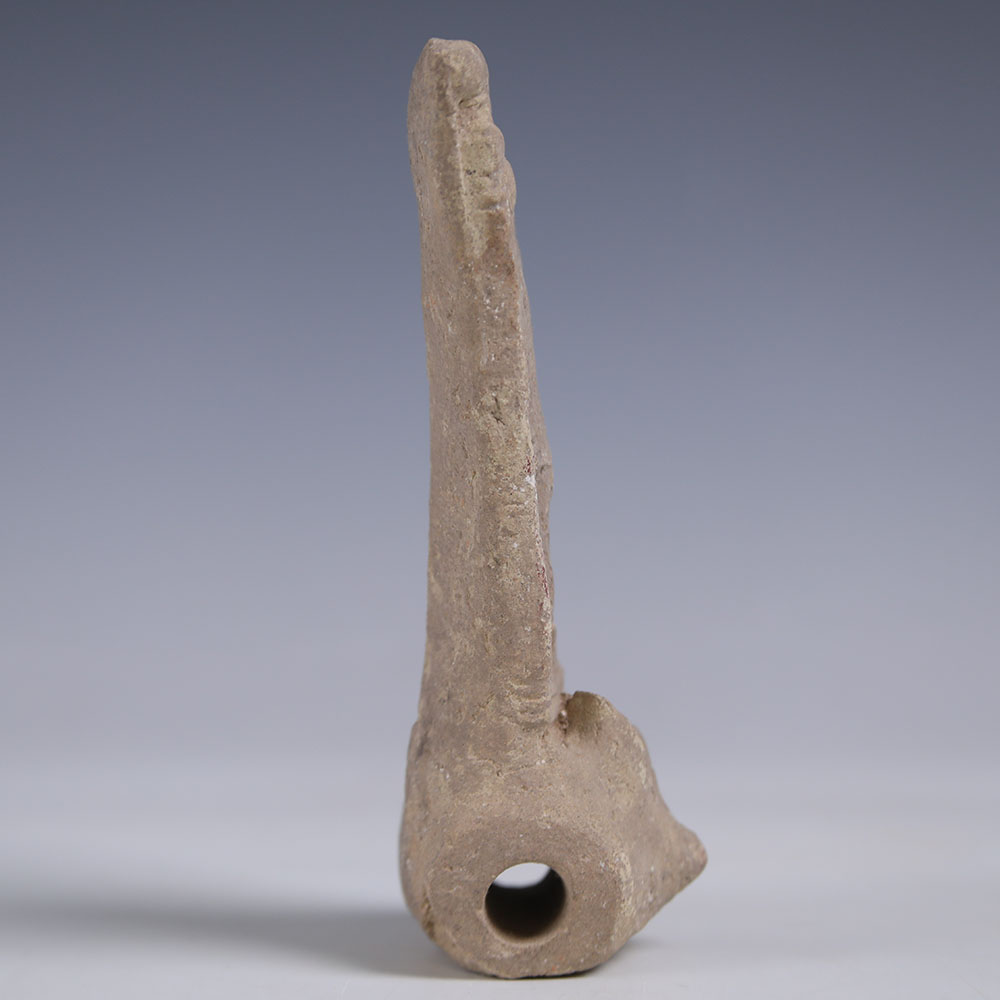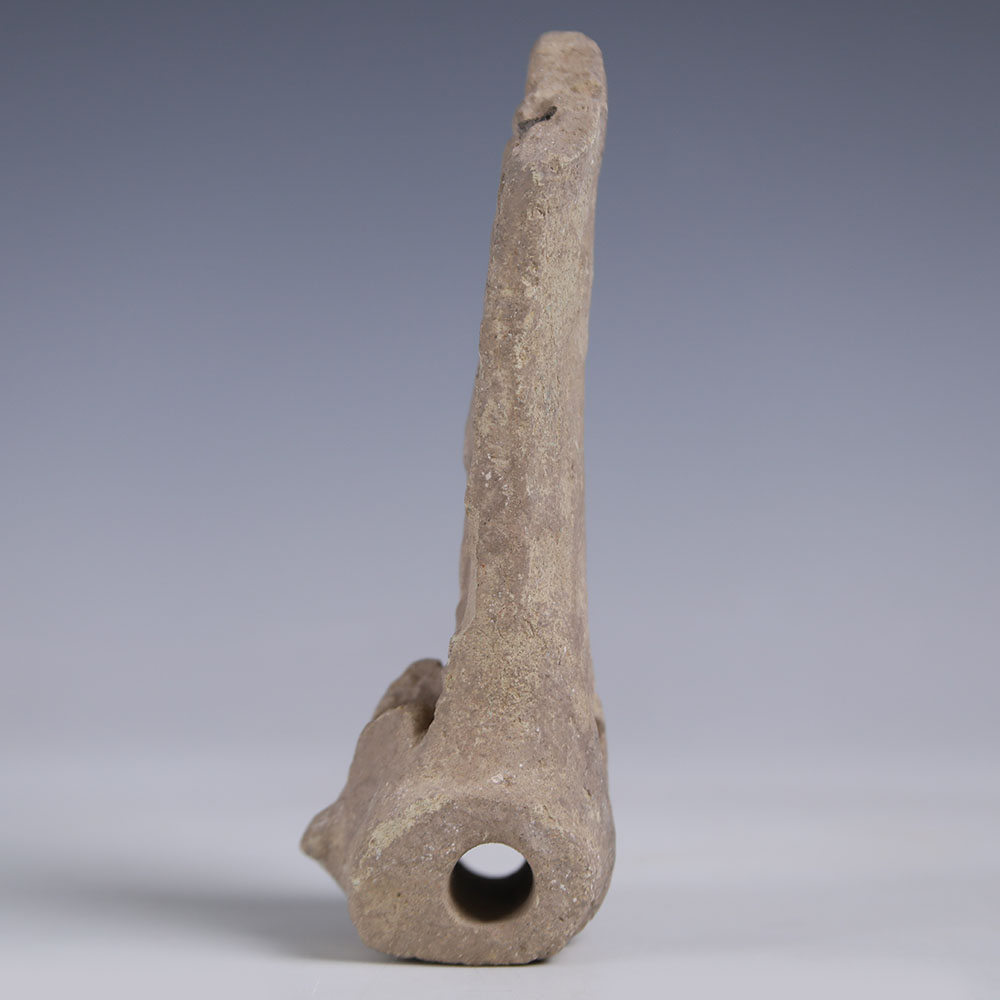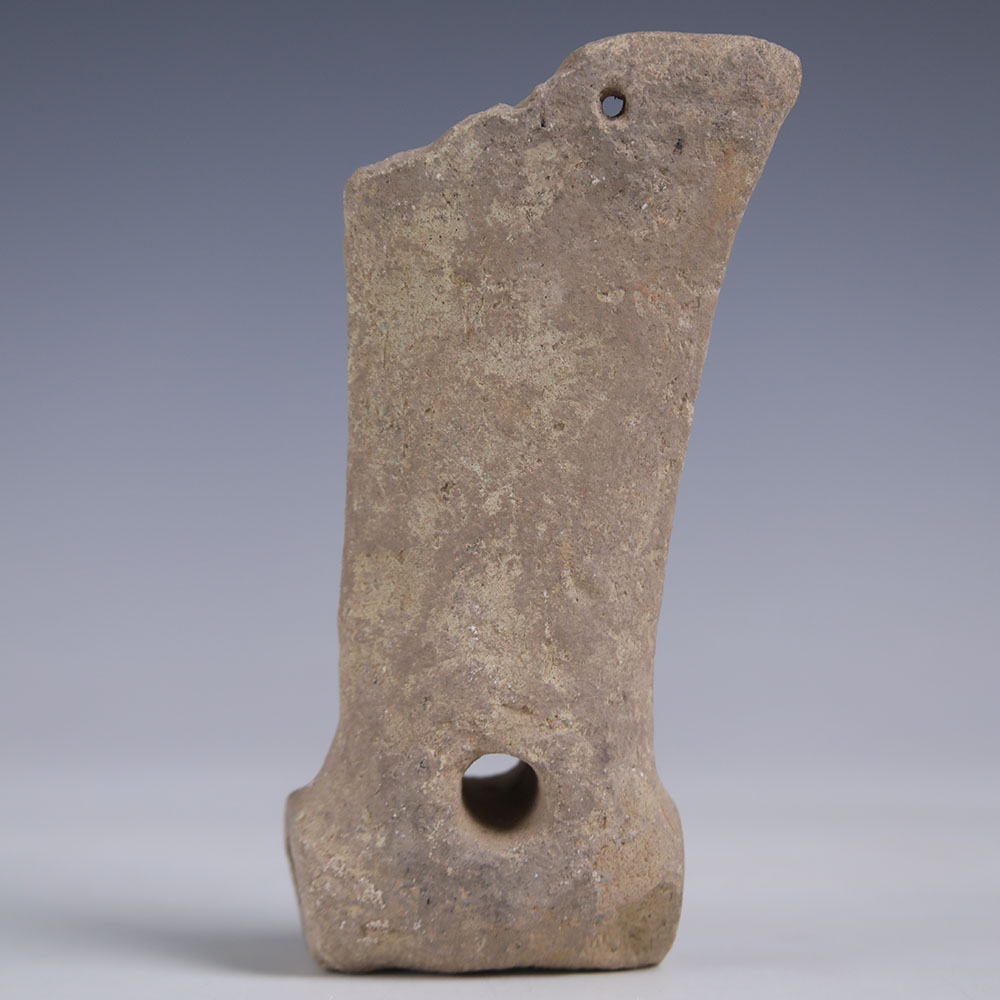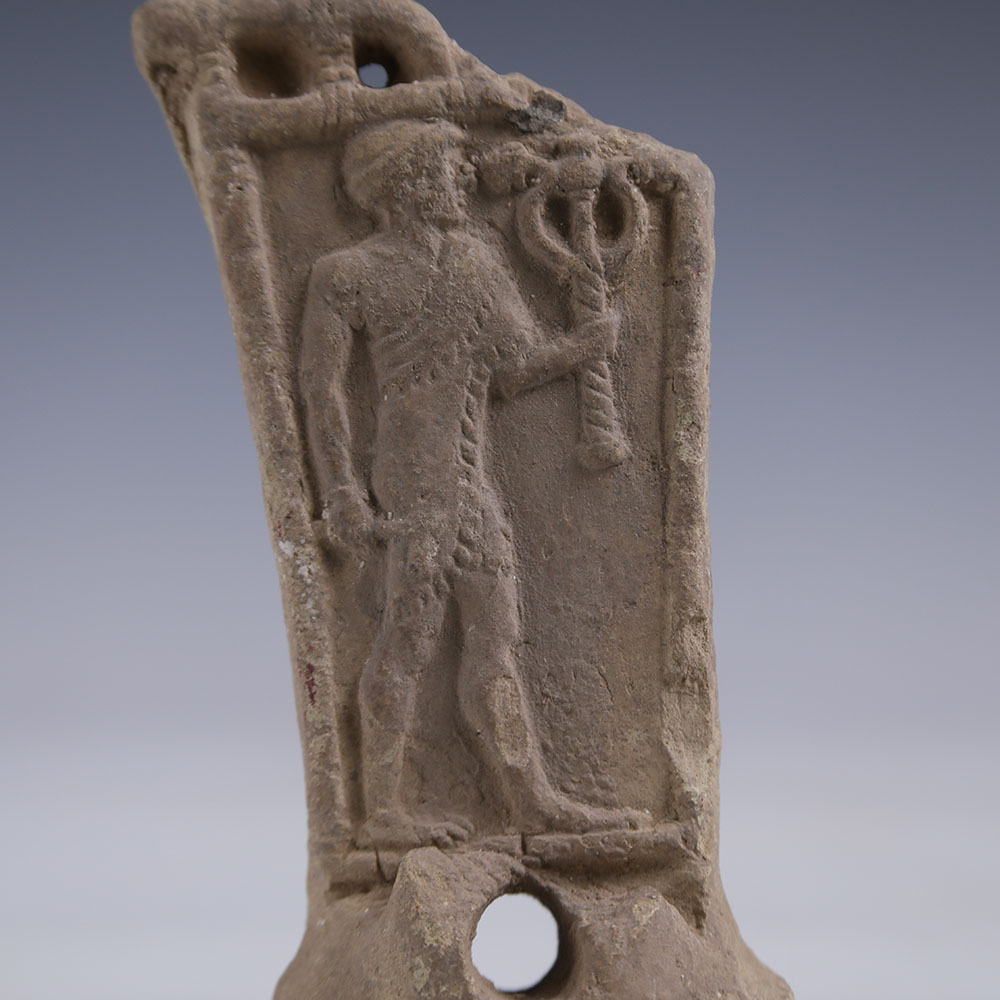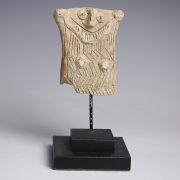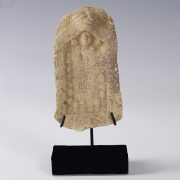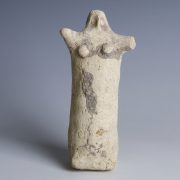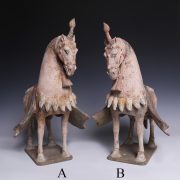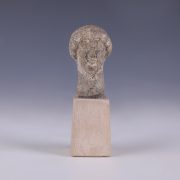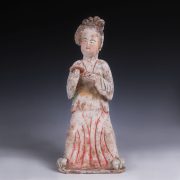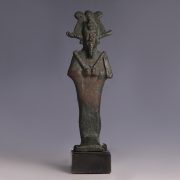Unlike widely attributed Babylonian terracotta plaques, on which iconographic representations reflect pan-Mesopotamian reliefs, the designs on modelled votive chariots are archaeological-site specific. While Mesopotamian religious symbols should be probably be interpreted as representing aspects of divine power rather than individual deities, combinations of symbols serve to identify particular gods. When these are found on modelled chariots, they can be related to the deities of the specific city in which they were found. The religious symbol, shown on this modelled chariot, features a clearly portrayed silhouette of a feline-headed club with a swirling shaft, which is associated with the god Nergal. Nergal’s images were mainly favoured in Kish ( cuneiform:𒆧𒆠, an important archaeological site which was dominated by Akkadian civilisation during the circa 2900-2350BC), suggesting this chariot might have been associated with the city Kish.
Old Babylonian Terracotta Votive Chariot with the Deity Nergal
$1,679.33
A rare and finely moulded Old Babylonian terracotta votive chariot, depicting a clearly expressed presentation of a warrior god holding a mace. The iconography, shown on this chariot, is neatly outlined by slightly protruding edges. The clean-shaven male figure is depicted wearing a warrior’s kilt and the iconic round headdress of an Isis-Larsa or a Babylonian ruler. The upper edge of his tunic terminates into three folds which wrap across his left shoulder, leaving the right side of his chest and arm uncovered, thereby accentuating realistic anatomical details and his masculine physique. Consistent with the characteristic pose shown on earlier and contemporaneous cylinder seals and monumental sculptures, he is depicted in a commanding and erect gesture, holding his enigmatic mace in his left hand and the scimitar in his right hand. The cylindrical staff raises from a rounded base, decorated with swirl ornamentations. Two elegantly curved lines, extend from the middle body of the shaft, terminating into a feline head at each side. The hollowed terracotta base, which is horizontally perforated, suggesting a wooden carriage axle was once inserted inside. The back of this chariot is plain and unworked.
Provenance: Ex S.M. Collection, London, Mayfair, acquired 1969-1999s.
Condition: This object is a fragmentary piece of a once completed, modelled terracotta chariot. Right hand corner missing.
In stock
| Weight | 316.5 g |
|---|---|
| Dimensions | W 7.8 x H 16.1 cm |
| Culture | |
| Region | |
| Pottery and Porcelain |
